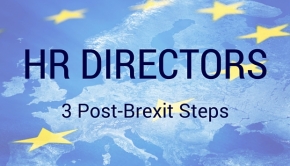by Clayton Glen
0Culture: Championing Team Engagement
We have a thought-provoking post from Clayton Glen, co-founder and director of ImaginativeHR, on company culture and employee engagement. If you have ever completed a staff survey, or been responsible to for rolling these surveys out, and wondered what happened to the post-survey actions and outcomes, read this post.
Authentic Culture Building
A recent National Venture Capital Association / Ernst & Young study reported in the Venture Capital Review (Issue 28, 2012) under the title “Culture is a Business Issue…’’, concludes that culture is unique and provides arguably the most sustainable competitive advantage an organisation can have for distinguishing itself against the competition.
The study also found that many factors help drive and define the culture, including ‘’leadership styles, policies and procedures (or sometimes lack thereof), titles, hierarchy, as well as the overall demographics and workspace.’’ – a conscious appreciation of the impact of all of these business building blocks on the emerging culture of a business being key.
Culture develops because of our conscious actions, initiatives and strategies, or in spite of these conscious efforts; impacted by a broad mixture of situational and team realities; e.g.
- Alignment between business goals and individual objectives
- The quality and authenticity of organisational leadership
- The level of trust, honesty and transparency within the organisation.
- Alignment between values and behaviour
- Focusing on learning and development across all levels of the organisation.
- The incentivisation of culture alignment efforts
- The encouragement and celebration of ‘heroes and superstars’
The study concludes that ‘’… culture is a business issue that has significant impact on a venture’s ability to generate a return on investment and should be prioritized and measured just like other business objectives such as financial growth, product development, sales, marketing and the like.’’ The key opportunity being to consciously design and champion an authentic culture which drives and supports financial growth.
An excellent illustrative example of ‘what great culture building and authentic engagement stewardship looks like’ followed the early-2016 staff communication by LinkedIn’s CEO, Jeff Weiner; addressing the 40% drop in share value following the recent 2015 earnings announcement, who countered potential staff despondency with the following appeal:
“We are the same company we were the day before our earnings announcement, … You’re the same team you were … and most importantly we have the same mission, vision and sense of purpose in terms of our ability to create economic opportunity … None of that has changed.”
Engagement diagnostics (staff surveys, focus groups and 360s) … the means, not the end
I developed a real passion for pinpointing the touchpoints of team engagement and morale and managing team engagement projects over 20+ years in HR and HR consulting; across a broad range of sectors with fantastic, diverse and very unique organisations like Federal-Mogul, Shazam Entertainment, Universal Music, Honda, Viacom (MTV & Comedy Central), ITN, Roche Diagnostics, Dixons Carphone, Gluru, Ireland’s Electricity Supply Board (ESB) and many others – ranging from well-established FTSE 100 or Public Sector organisations with 50,000 or more employees ranged across multiple business units and locations, to start-up organisations with under ten employees, operating largely virtually.
Regardless of size and complexity, the touch points of engagement are the same.
Generally, at these organisations, we have set out to measure levels of engagement (via surveys, focus groups, 360s and / or structured interviews), following or ahead of a major organisational event; e.g. pre and post restructuring, post re-branding, post-merger, post major strategic or market adjustments, aligned with employer brand development efforts, parallel with e.g. Sunday Times, Fortune, Glassdoor ‘Best Company to Work for’ efforts, or as part of a conscious culture building programme, aligned with new balanced scorecard / rewards strategy, etc.
As someone experienced in managing many engagement diagnostics projects, my starting position at all times when setting sponsor / stakeholder expectations is that the diagnostic (survey, focus group, etc.) is clearly only the means, not the end …
All too often however, huge effort goes into building a defensible diagnostic with multi-stakeholder input; ensuring that the diagnostic asks the right and optimal number of questions, ensuring that norms and benchmarks are clearly established for future comparison purposes, ensuring that distribution communication and logistics work perfectly, calibrating excellent response rate, reporting and action planning dashboards, etc. Though, all too often the post-measurement ‘what’s next and who owns it?’ piece gets lost in the detail; neglected and unhelpful at best or destructive at worst to future efforts to build ‘winning engagement’.
Ensuring ownership of post survey efforts – saying what you can’t do up-front
In an article I wrote ten years ago for the Industrial and Commercial Training Journal called ‘Key skills retention and motivation: the war for talent still rages and retention is the high ground’ I concluded that engaging and retaining key organisational talent ‘’requires joined-up thinking, a clear business-driver link, and a good deal of thought and energy’’.
I’m still amazed ten years later that organisations I work with still largely continue to effectively separate the diagnostic means (surveys, focus groups, reporting and everything that revolves around these processes) from establishing clear ownership earliest around the ‘what’s next and who’s accountable?’ – this disconnect needs to be actively challenged.
As many people who have participated in staff surveys will say; there is often a very tenuous link between the efforts and fanfare that went into promoting, validating and rolling out these surveys vs. the efforts put into assuring tangible post-survey outcomes, actions and ownership.
For this reason, I tend to focus leadership attention on building honest FAQs and frank narratives ahead of any diagnostic; focused on,
- areas where the organisation does not have the capacity, resources or inclination to make any adjustments, as this starts to build the narrative for what can and is unlikely to change in the future, and
- very clearly identifies who will be held accountable for post-diagnostic next steps … be these senior leadership, line managers via the natural hierarchical / performance management cascade, or e.g. designated engagement champions.
By definition, this pre-diagnostic ‘commitment’ requires a multi-stakeholder orientation … staff surveys should never be the sole domain of HR / Internal Comms; rolled-out by the people team to the organisation.
Investing in a multi-stakeholder approach aligns expectations and helps build the ‘story for the future’ in any staff communication, prior to any diagnostic. It also ensures that staff are a step closer to answering the question we never ask: “How confident are you that actions will be taken as result of this survey?”
Developing engagement championship – sharing the engagement challenge bottom-up
One of the difficulties with this approach is that, even with fantastic leadership and engagement sponsorship, line managers often have enough on their plate keeping the business going, meeting their and their team’s commercial objectives and reacting to complex environmental challenges. It’s realistic that some business leaders will not find the time to follow up energetically and creatively on the outcomes of the last staff survey and recommended actions generated from it.
It’s always sensible to balance top-down engagement efforts with bottom-up efforts; engaging employee reps or, better still, designating these as ‘engagement champions’ who can help build momentum and a great narrative around the organisation’s staff engagement efforts; linking these to broader strategic and commercial efforts.
But where’s the DNA for ‘engagement championship’? Very often the core stakeholder DNA for an ‘Engagement Champions’ steering group sits in obvious places within the business; e.g. staff reps, the Customer Experience team, the Resourcing team, the Employer Branding / EVP team, the Investor Comms team, the Corporate Social Responsibility team, individual, team and regional exemplars of great customer service, recent graduate / intern appointments, HR, L&D and OD of course … members of the team likely to expend discretionary effort in the interests of building momentum and a brave and authentic (evidence-based) and creative engagement ‘story-line’.
The challenge of course for any ‘engagement champion’ is; ‘What do I get out of it and how tangible is it?’ and ‘What do colleagues get out of it and how tangible is it?’ Once these questions are part of a collective consciousness and can be answered, it becomes simpler to craft a fantastic engagement narrative and to share great, resonating stories across the organisation.
Optimally, these stories will assist refinements to future diagnostics – e.g. bi-annual pulse surveys, etc. and will provide a base for reminding line managers about which internal exemplar they need to look to, to enhance engagement and build motivation in their own teams.
Adopting an ‘engagement champions’ approach as part of your team engagement strategy also increases the likelihood that you will broaden the base of multi-functional talent available to you who are experts in stakeholder communication, as well as increasing the chances that you will benefit from a broader base of knowledge and experience in the power of digital social platforms for external story-telling, best-practice learning and authentic employer branding purposes; e.g. team members skilled in leveraging e.g. LinkedIn’s Pulse, Somewhere.com, Storify, Glassdoor.com, Facebook, Twitter, Slideshare, Vine, Instagram, etc. towards building your organisation’s stakeholder ‘story’
Engagement champions are also very likely to find the time to explore other sources of engagement best practice; e.g. Engage for Success, CIPD, SHRM, a growing community of excellent engagement bloggers and commentators, etc.
Conclusion:
The objectives of engagement championship should always be to leave a lasting impression with all stakeholders; i.e.:
- prospective new hires (impacting the recruitment & selection process)
- new-starters (impacting onboarding and induction)
- partners (influencing partner relationships)
- investors (nurtured and measured with direct linkages to business value)
- customers / users (culture rubs off)
Maintaining discipline, energy and behavioural endorsement to build a winning / scalable organisational culture is what differentiates leading businesses like Google, Facebook, Apple, Samsung, etc.
Developing a cadre of engagement champions to support your efforts may be a no-brainer for your organisation.
As always we are interested to hear your views. If there is anything in the above post that you wish to comment on, or if you would like to share your experience of ‘engagement champions’ and culture, please leave a comment in the box below.
























